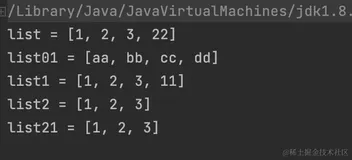Array.from()方法就是将一个类数组对象或者可遍历对象转换成一个真正的数组 Array.reduce()方法对累加器和数组中的每个元素 (从左到右)应用一个函数,将其减少为单个值。
Array.from()
// 那么什么是类数组对象呢?所谓类数组对象,最基本的要求就是具有length属性的对象。 // 1、将类数组对象转换为真正数组: let arrayLike = { 0: "tom", 1: "65", 2: "男", 3: ["jane", "john", "Mary"], length: 4 }; let arr = Array.from(arrayLike); console.log(arr); // ['tom','65','男',['jane','john','Mary']] // 那么,如果将上面代码中length属性去掉呢?实践证明,参考答案会是一个长度为0的空数组。 // 这里将代码再改一下,就是具有length属性,但是对象的属性名不再是数字类型的,而是其他字符串型的,代码如下: let arrayLike = { name: "tom", age: "65", sex: "男", friends: ["jane", "john", "Mary"], length: 4 }; let arr = Array.from(arrayLike); console.log(arr); // [ undefined, undefined, undefined, undefined ] // 会发现结果是长度为4,元素均为undefined的数组 // 由此可见,要将一个类数组对象转换为一个真正的数组,必须具备以下条件: // 1、该类数组对象必须具有length属性,用于指定数组的长度。如果没有length属性,那么转换后的数组是一个空数组。 // 2、该类数组对象的属性名必须为数值型或字符串型的数字 // ps: 该类数组对象的属性名可以加引号,也可以不加引号 // 2、将Set结构的数据转换为真正的数组: let arr = [12, 45, 97, 9797, 564, 134, 45642]; let set = new Set(arr); console.log(Array.from(set)); // [ 12, 45, 97, 9797, 564, 134, 45642 ] // Array.from还可以接受第二个参数,作用类似于数组的map方法,用来对每个元素进行处理,将处理后的值放入返回的数组。如下: let arr = [12, 45, 97, 9797, 564, 134, 45642]; let set = new Set(arr); console.log(Array.from(set, item => item + 1)); // [ 13, 46, 98, 9798, 565, 135, 45643 ] // 3、将字符串转换为数组: let str = "hello world!"; console.log(Array.from(str)); // ["h", "e", "l", "l", "o", " ", "w", "o", "r", "l", "d", "!"] // 4、Array.from参数是一个真正的数组: console.log(Array.from([12, 45, 47, 56, 213, 4654, 154])); // 像这种情况,Array.from会返回一个一模一样的新数组
Array.reduce()
语法: array.reduce(function(accumulator, currentValue, currentIndex, array), initialValue); accumulator:累加器,即函数上一次调用的返回值。第一次的时候为 initialValue || arr[0] currentValue:数组中函数正在处理的的值。第一次的时候initialValue || arr[1] currentIndex:数据中正在处理的元素索引,如果提供了 initialValue ,从0开始;否则从1开始 array: 调用 reduce 的数组 initialValue:可选项,累加器的初始值。没有时,累加器第一次的值为currentValue;注意:在对没有设置初始值的空数组调用reduce方法时会报错。
//无初始值 [1, 2, 3, 4].reduce(function(accumulator, currentValue, currentIndex, array) { return accumulator + currentValue; }); // 10
callback accumulator currentValue currentIndex array return value
first call 1(数组第一个元素) 2(数组第二个元素) 1(无初始值为 1) [1, 2, 3, 4] 3
second call 3 3 2 [1, 2, 3, 4] 6
third call 6 4 3 [1, 2, 3, 4] 10
//有初始值 [1, 2, 3, 4].reduce(function(accumulator, currentValue, currentIndex, array) { return accumulator + currentValue; }, 10); // 20
callback accumulator currentValue currentIndex array return value
first call 10(初始值) 1(数组第一个元素) 0(有初始值为 0) [1, 2, 3, 4] 11
second call 11 2 1 [1, 2, 3, 4] 13
third call 13 3 2 [1, 2, 3, 4] 16
fourth call 16 4 3 [1, 2, 3, 4] 20
//1.数组元素求和 [1, 2, 3, 4].reduce((a, b) => a + b); //10 //2.二维数组转化为一维数组 [ [1, 2], [3, 4], [5, 6] ] .reduce((a, b) => a.concat(b), []) //[1, 2, 3, 4, 5, 6] [ //3.计算数组中元素出现的次数 (1, 2, 3, 1, 2, 3, 4) ].reduce((items, item) => { if (item in items) { items[item]++; } else { items[item] = 1; } return items; }, {}) //{1: 2, 2: 2, 3: 2, 4: 1} [ //数组去重① (1, 2, 3, 1, 2, 3, 4, 4, 5) ].reduce((init, current) => { if (init.length === 0 || init.indexOf(current) === -1) { init.push(current); } return init; }, []) //[1, 2, 3, 4, 5] [ //数组去重② (1, 2, 3, 1, 2, 3, 4, 4, 5) ].sort() .reduce((init, current) => { if (init.length === 0 || init[init.length - 1] !== current) { init.push(current); } return init; }, []); //[1, 2, 3, 4, 5]
